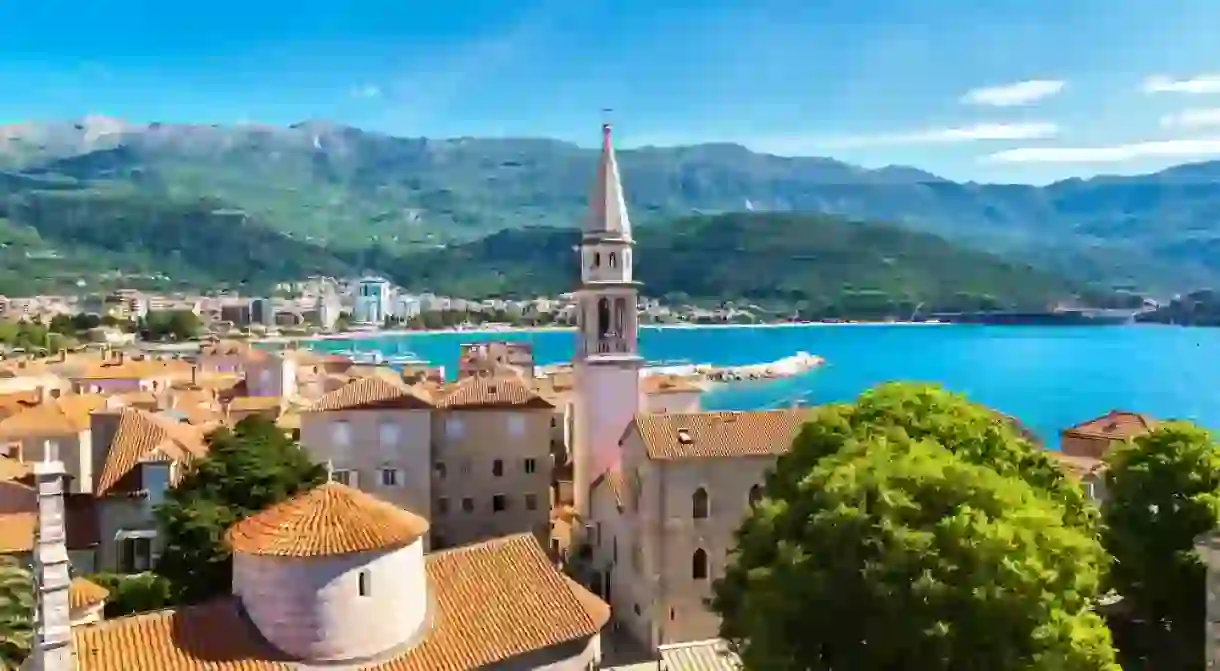15 Reasons Why Montenegro is Essential for Every Eurotrip

Montenegro, it’s the best little country you’ve never heard of. When planning a Eurotrip, it’s easy to see tiny Montenegro on the map and dismiss it. Don’t make that mistake! With fabulous scenery, rich history and culture, no crowds and prices a fraction of those in other European destinations, there are so many reasons why Montenegro must be included on any Eurotrip itinerary.
Central Location
Montenegro’s central location in Europe makes it a breeze to incorporate into any Eurotrip. It lies just across the Adriatic from Italy, and it’s only a 45-minute drive from Croatia’s must-see destination, Dubrovnik. With three international airports, rail, bus and ferry connections, Montenegro is very easy to get to.
Yet it’s off the beaten track
Even though it’s so easy to get to, Montenegro remains relatively undiscovered compared to other European destinations. Montenegro has all the jaw-dropping beauty, without the crowds. Visitors in the shoulder season (May, June, September and October) revel in deserted beaches, a relaxed atmosphere and comfortable temperatures.
Mountains
Anyone who visits Montenegro leaves raving about its stunning natural beauty. Montenegro means Black Mountain and those mountains don’t disappoint. Durmitor National Park is full of sheer peaks that seem to touch the sky. Bjelasica mountain range has gently rolling hills full of lush grass and purple wild flowers. Then there is Prokletije, the dangerous ‘accursed’ mountains on the Albanian border.

Sea
The mountains come to an abrupt end when they seemingly drop off into an azure sea. At the junctions there are little pockets of golden sand and pebble beaches where people go to cool off on a hot summer’s day.

Doughnuts
No Montenegrin beach is complete without its local doughnut seller. These summertime heros walk up and down the beaches (often trailed by happy children) selling delicious homemade doughnuts. With a choice of jam or chocolate toppings, a mid-morning doughnut is just the thing to fuel hours of swimming and sunbathing.
Montenegro beaches’ competitive edge: fresh, hot donuts delivered direct to your towel. Viva summer! #montenegro #beach #summer #travel #donuts
A post shared by Montenegro Pulse (@montenegro_pulse) on Aug 16, 2017 at 7:33am PDT
History and culture
It’s not just the mountains and picture-perfect coastlines that turn visitors into lifelong fans. Some of Montenegro’s towns are well over 2,000 years old. The quaint architecture, seaside hamlets and historical sites make Montenegro a truly unforgettable destination.

It’s easy on the pocket
Want a European destination that won’t break the bank? A stay in Montenegro costs a fraction of the price in other European holiday spots. Attractions are just a couple of Euros, main dishes in restaurants start from €5 and there’s accommodation to suit every budget.
Thrills and adventure
Montenegro is an outdoor enthusiast’s paradise. There’s an abundance of activities like hiking, cycling and kayaking for all ages and fitness levels. Adrenaline junkies love white-water rafting, canyoning and ziplining. With summer sunshine all but guaranteed, Montenegro is the ideal outdoor holiday destination.

Eco-tourism
Montenegro is also an eco-tourism paradise. Biking, hiking and horseback riding are all eco-friendly ways to explore Montenegro’s beautiful mountain and coastal scenery. Although a tiny country, Montenegro has five national parks that encompass staggering mountains, emerald lakes, rolling hills and pristine canyons.

It’s delicious
With a mix of Mediterranean, Slavic and Turkish influences, Montenegro is a delicious place to visit. Try seafood buzara (stew) on the coast and lamb cooked in milk in the mountains. But the must-try Montenegrin dish is Njeguški Steak, a schnitzel stuffed with prosciutto and cheese from Njeguši village. The dish was invented by Yugoslav President Tito’s private chef and won him first prize in an international cooking competition. Add some Turkish coffee and a slice of baklava, and we guarantee you’ll go home satisfied.

Café culture
Montenegrins are known for being very relaxed. They’re quick to share a laugh and make friends with anyone they meet. And they love to have coffee. In fact, they will often meet friends for coffee several times a day, and the cafés are always full of lively locals chatting.
Montenegrin hospitality
The country’s small-scale tourism means visitors also get to know Montenegro’s unique culture through connecting with local hosts. Montenegrin hospitality is second to none, and, unlike other tourist-jaded destinations, Montenegrin hosts are known for treating their guests like family.
Bird, birds, birds
Montenegro’s Lake Skadar is Europe’s largest bird reserve. It’s a boon for bird-watchers, but even casual visitors love getting out on the like to see the awe-inspiring pelicans, elegant herons and brightly coloured kingfishers. Close to Ulcinj, the Ulcinjska Salinas are home to up to 40,000 birds at a time, among them a flock of over 500 flamingos.

Ruins
For intrepid travellers who love to step off the beaten track, exploring ancient ruins and seeing how people lived hundreds of years ago is easy in Montenegro. There are ruined fortresses and settlements dotted all over the country, the most famous of them being Kotor’s San Giovanni, which snakes up the hillside behind the town.

Festivals
Why not include a beachside music festival in your Eurotrip plans? Montenegro’s two biggest summer music festivals, Ulcinj’s Southern Soul Festival and Budva’s Sea Dance Festival, offer days and nights of sun, sea, music and fun. Throughout the year there are cultural festivals, like Kotor and Budva’s annual carnivals, which are a parade of costumes, music and children’s entertainment.














